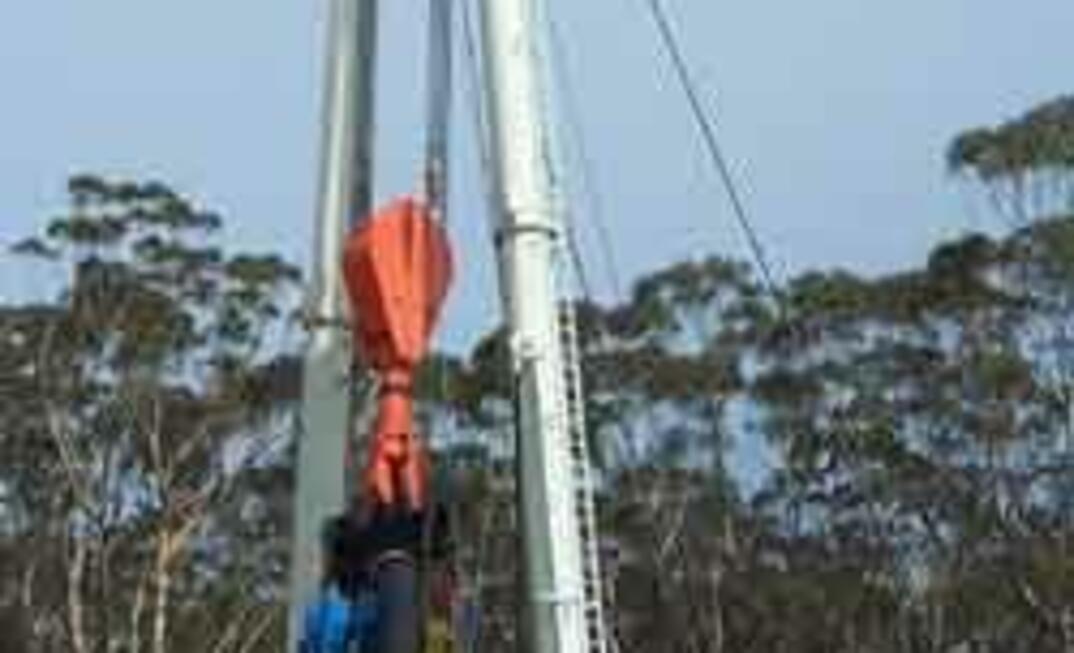Three types of shaft construction methods were tendered for constructing the No 1 shaft: conventional drill and blast; raise bore; and blind bore.
The conventional method was discounted due to several reasons, including workforce exposure during construction and the use of explosives in proximity to residences.
Ultimately the decision was made to construct the shaft using a blind bore method tendered by Ardent Underground.
According to BHP Billiton Illawarra manager special projects, Peter Whittall the method offered several advantages: The shaft could be sunk, lined and the fan pre-installed prior to holing into the shaft from the mine roadways. This effectively took the shaft off the mine’s critical path for longwall startup.
Secondly, the shaft is filled with water until it is ready to be lined, reducing the opportunity for the shaft walls to deteriorate. No person would need to enter the shaft which met the safety objectives of both Dendrobium and Ardent; and the shaft material did not have to be dealt with by the mine’s coal flow system.
Ardent opted to drill without a pilot hole and following completion of the 8m pre-sink, the shaft was drilled to full depth of 180m at 4.25m in a single pass, requiring the shaft be maintained full of water during drilling.
A small diameter steel pipe running down the inside of the drill string delivered compressed air to the bottom of the drill string and the released compressed air created negative pressure. This coupled with the hydrostatic head of the shaft water lifted all cuttings from the hole inside the drill.
On completion of the shaft a shotcreting frame was suspended in the shaft consisting of a rotating arm, fixed stabilisers, IS lighting and video cameras. The shotcrete was then applied remotely by an operator in a cabin adjacent to the collar. About 15m of head was bailed from the shaft at a time, exposing 15m of shaft wall for lining.
Initially there were some technical problems with applying the product consistently but this was rectified. The most significant problem arose when an aquifer was intersected at about 48m below collar level. The water outflow washed the shotcrete off during application and the operation was suspended. Several options were reviewed but to prevent people going into the shaft stopping the flow remotely was the solution.
“The eventual solution was ingenious,” Whittall said. “A Pro-Ram was suspended in the shaft on a makeshift frame with telescopic stabilisers. Lights and camera were mounted on the frame to allow remote location of the drill rig and remote operation via extended hose lines. A modified 1200mm drill was drilled into the heart of the water outflow using water flushing. Polyurethane was then pumped through the drill rod into the surrounding strata until the water flow ceased.
“There were a number of engineering ‘tricks’ that needed to be employed to do what sounds like a simple task. The result was that the lining was able to be continued without further complication, no-one had to enter the shaft and the shaft was successfully lined to several metres from the base.”
Whittall said while the shaft was completed behind schedule due to some drilling and lining problems it was still well ahead of underground operations and allowed the fan to be installed and pre-commissioned. The fan was turned on just prior to the miner holing the bottom of the shaft.
“The only injury incurred during the sinking and lining of the shaft was a cut hand to an employee handling a piece of checker-plate. The shaft project was awarded a Merit Award in BHP Billiton’s annual Health Safety Environment and Community Awards in 2003," he said.
This concludes the 3 part series on Dendrobium's mine planning. For Part 1 Click here, Part 2 Click here
























